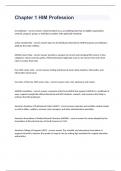Resumen
Summary of All Articles - New Media Challenges (S_NMC)
- Grado
- Institución
Summary of all articles of New Media Challenges (S_NMC) at the Vrije Universiteit Amsterdam, Communicationscience year 3. This summary contains all of the articles that need to be read for this course in year . NOTE: One of the articles is in Dutch, since this article was also covered in the 2nd...
[Mostrar más]












